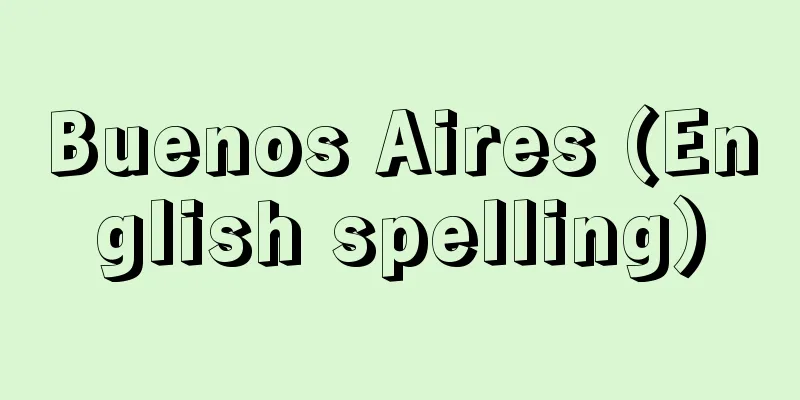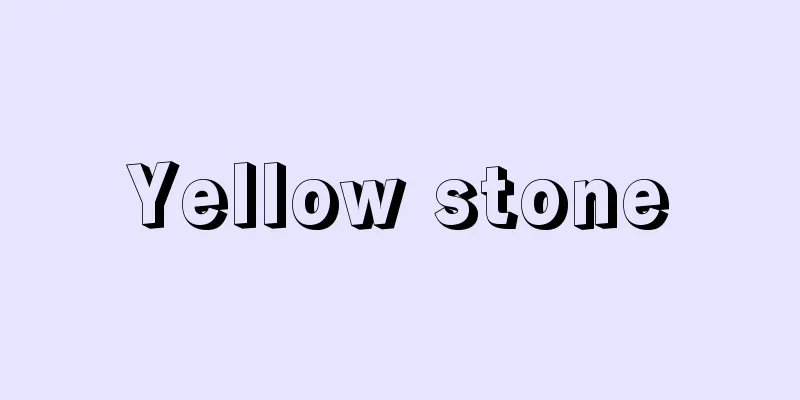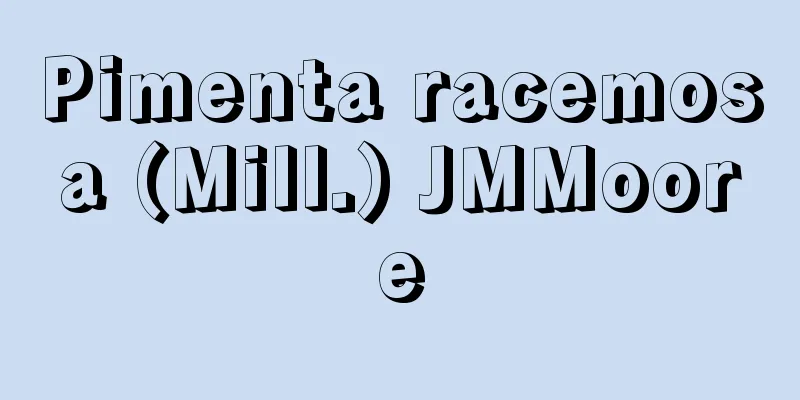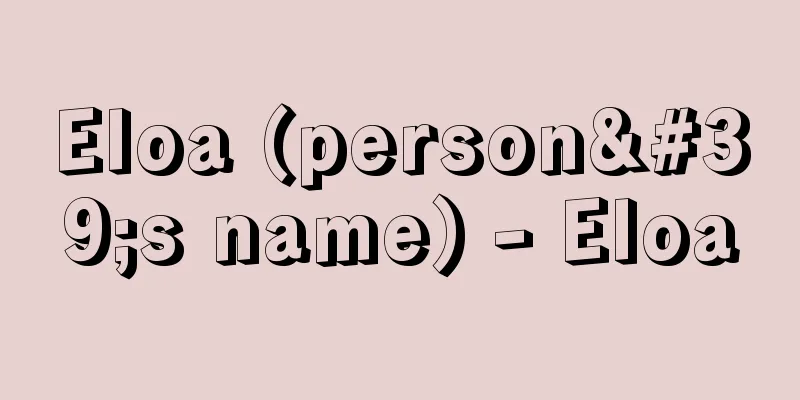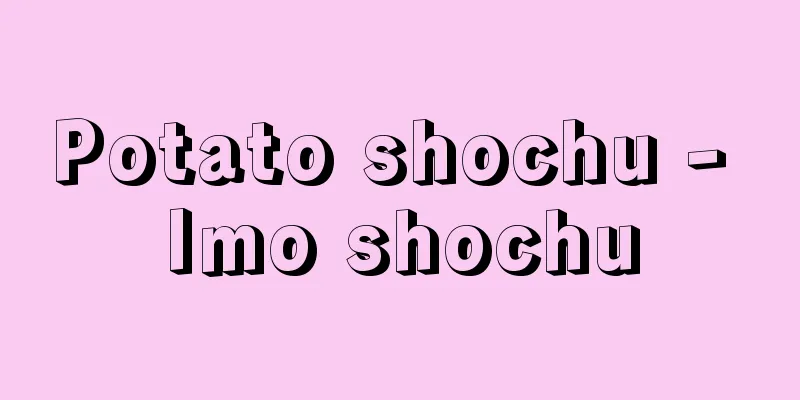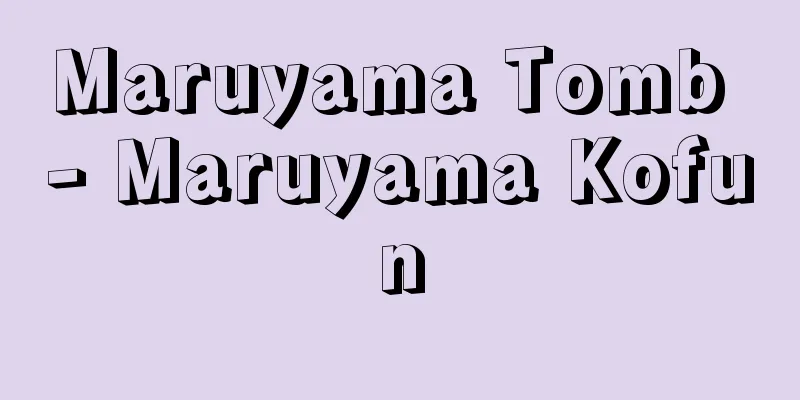Republic of the Congo - République du Congo
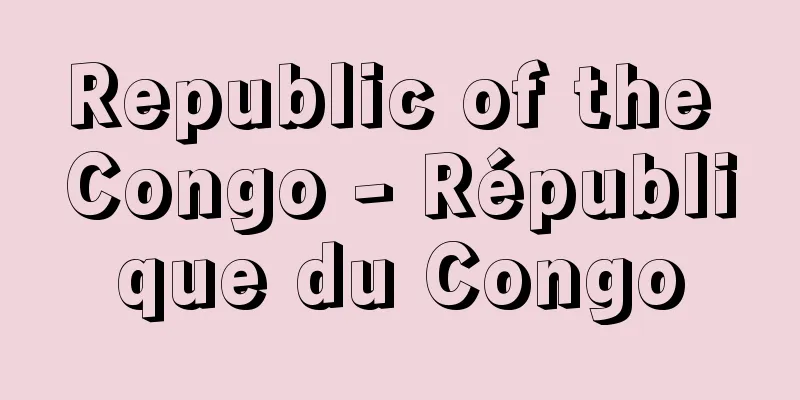
|
A country in central-western Africa, straddling the equator. It borders Central Africa and Cameroon to the north, Gabon to the west, the Democratic Republic of the Congo (formerly Zaire) to the east and south, and faces the Atlantic Ocean to the southwest. It has an area of 342,000 square kilometers and a population of 3.02 million (estimated as of 2000). Its capital, Brazzaville, faces Kinshasa, the capital of the Democratic Republic of the Congo, across the Congo River. It was the first people's republic born in sub-Saharan Africa, and had strong ties with China and the former Soviet Union, but changed its name to the Republic of the Congo in 1991. Economically, it has a strong relationship with its former colonial power, France. [Ken Akasaka] NatureMost of the country occupies the northwestern part of the Congo Basin. In the east, the Congo River and the Ubangi River form an alluvial plain, with many swamps. Towards the west, this plain increases in elevation and becomes a plateau with an elevation of 900 meters. The west has a complex topography, with the valley of the Nyari River opening out, and the Mayombe Hills running between it and the coastal plain. As the country lies directly on the equator, it has a typical tropical rainforest climate with high temperatures and humidity. Annual precipitation is 1,000-2,000 mm, with the amount of rain increasing the further north you go. North of the equator is tropical rainforest, while the southern part shows a savanna landscape. The average annual temperature in the capital, Brazzaville, is 25.6°C, with an average annual precipitation of 1,371 mm, and the dry season is three months from June to August. The coastal plain is slightly cooler due to the influence of the Benguela Current, and the dry season is long, making it a savanna region. [Ken Akasaka] GeographyThe population density is sparse at about nine people per square kilometer, but 75% of the population is concentrated in the southern savannah region between Pointe Noire and Brazzaville. The population of the capital, Brazzaville, was about 940,000 (1995) and is growing rapidly. Next is Pointe Noire, a port city facing the Atlantic Ocean, with a population of about 580,000, followed by Louobomo with a population of about 80,000 and N'Kaye, a small city with a population of about 40,000. There has been a rapid influx of population from villages, with 60% of the population now urban dwellers. The downstream of the Congo River is a rapid current and cannot be navigated by ships, but the upstream, including the Oubangui River, is navigable for 2,400 kilometers from Lake Marebo in Brazzaville, and serves as a major transportation artery. The Congo Atlantic Railway also runs between Brazzaville and the port of Pointe-Noire on the Atlantic coast. Plantation development and urbanization are progressing along this railway. These transportation arteries have enabled the Congo to develop economically since the colonial period through transit trade between the Atlantic Ocean and the interior. [Ken Akasaka] historyIn ancient times, around the time of Christ, this area was swept by waves of migration from the north by Bantu tribes who pursued the indigenous Negrilo people. At the end of the 15th century, when Portuguese navigators reached the mouth of the Congo River, the kingdoms of Loango and Kakongo were formed. These were vassals of the Kongo Kingdom, but prospered due to the slave trade by European merchants. Traditionally, trade relations between coastal kingdoms and inland chiefs were based on salt and agricultural products. The slave trade was also based on this network, with European slave ships waiting at coastal ports to receive slaves from the inland. In the 18th century, many commercial ports were opened along the coast and small kingdoms were formed. The number of slaves transported from the coasts of Congo (now the Republic of Congo), Zaire (now the Democratic Republic of Congo), and Angola reached 13.5 million. In 1870, French explorer de Brazza explored the Congo River (Zaire River) basin, reached Stanley Pool, and concluded an agreement with the chief of the Bateké. Based on this, in 1882 he established the French colony of Congo on the right bank of the Congo River. French Equatorial Africa was then formed in 1920, with Brazzaville designated as its capital. After World War II, Congo was promoted to a French overseas territory, and in 1958 it became an autonomous republic within the French Community, and on August 15, 1960, it gained independence as the Republic of the Congo. [Ken Akasaka] PoliticsAt the time of independence, the pro-Western Fulbert Youlou was elected as the first president. However, in a coup in August 1963, Youlou was ousted and Alphonse Masamba Deba became president. He promoted socialism under the one-party rule of the Movement for the Revolutionary Nationalism of the Congo (MNR), established diplomatic relations with the Soviet Union and China, and relations with the West deteriorated. In 1968, Deba resigned as president, and Marianne Nguabi, who was from the north of the country, took real power with the backing of the military. He became president in 1969, founded the Congolese Workers' Party (PCT), which advocated Marxism-Leninism, enacted a new constitution, and changed the country's name to the People's Republic of the Congo. Political instability continued after that, and following an attempted coup in March 1970 and a strike in December 1971, Nguabi took direct control of the military and strengthened his dictatorship. However, Nguavi was assassinated in March 1977, and Colonel Opango took power. In March 1979, Defense Minister Denis Sassou-Nguesso (1943- ) became the new president, but the fall in oil prices in the mid-1980s led to the failure of his economic policies. In September 1990, strikes demanding higher wages spread across the country, and criticism of the longstanding one-party dictatorship of the PCT erupted. In 1992, a multi-party system and a bicameral parliament were introduced, and Pascal Lissouba (1931- ) of the Pan-African Union of Social Democrats (UPADS) was elected as president. Following the general election in May 1993, conflict between the ruling and opposition parties escalated into armed conflict, but a ceasefire agreement was reached in January of the following year. Efforts for peace were made, such as disarming militias employed by each political party and incorporating them into the military and police, but following a riot by former militia members in February 1996, armed clashes flared up again between supporters of the ruling and opposition parties in 1997. In June 1997, civil war broke out between factions of President Lissouba and former President Sassou-N'Guesso over the presidential elections scheduled for July. With the support of the Angolan army, the Sassou-N'Guesso faction took control of the entire country, centering on the capital, Brazzaville, in October of that year. President Lissouba and other influential government figures fled the country. In the same month, Sassou-N'Guesso was re-elected as president. [Ken Akasaka] Economy and IndustryCongo's economy depends on the development of its abundant mineral resources, including oil. The country has little farmland, and the rural population is declining as the population moves to cities. In addition to staple crops such as cassava (manioc), plantain bananas, and corn, Congo cultivates commercial crops such as coffee, cacao, and sugarcane. However, the production volume of these crops is low, and food supplies to cities cannot keep up, so the country relies on imports. As nearly 60% of the country is covered by forests, forestry was an important industry that accounted for 70% of exports before the discovery of oil. In the early 1970s, the production of limba, okoume, mahogany, and other wood products reached 830,000 cubic meters per year, but over-deforestation in the Mayombe Hills near the coast has led to sluggish growth in production. Oil development began in the 1960s, and in 1969 an offshore oil field was discovered off the coast of Pointe Noire. Oil production has increased dramatically since then, reaching 1,033 kiloliters in 1995, accounting for more than 50% of national income. Oil reserves are estimated at 230 million kiloliters. An oil refinery was also completed in Pointe Noire, and by 1985 it had reached a capacity of processing 5 million tons. Other underground resources are also abundant, and the potash mines of Saint-Paul near Pointe Noire are one of the world's largest producers, once accounting for 15% of the country's total exports. Zinc, copper, lead, and gold are also produced from the Mufferty mine in the south. The trade balance was exports of $1,936 million (1997 estimate), of which oil accounted for 85%. Imports were $925 million. Export partners were the United States and France, accounting for roughly half of the total, while imports were mainly from France. [Ken Akasaka] Society and CultureThe inhabitants are mainly Bantu-based agriculturalists, divided into 15 ethnic groups, including the Sanga, Bangui, Bateke, Bili, and Bakongo from north to south. Of these, the Bakongo (400,000) in the south has the largest population, followed by the Bateke (190,000) near Stanley Pool and Bangui (140,000) in the north, which have relatively large populations. In addition, about 140,000 immigrants from neighboring Gabon live in the north. The indigenous Negrillo people also maintain their traditional hunting and gathering lifestyle in the swampy forests of the east. Of the Bantu-based tribes, the Bili formed the Loango Kingdom, and the Sundi formed the Kakongo Kingdom. After the collapse of the Kongo Kingdom, the Bakongo also moved north and settled there. The sparse population density is a result of the aftereffects of the slave trade, when large numbers of people were transported as slaves. In the 1920s, a large number of residents were conscripted from rural areas for the construction of the Congo Atlantic Railway, many of whom died as a result of forced labor, and the scars of population movement are said to have remained at the very foundations of society. The devastation caused by these events is thought to be the reason why an anti-colonial movement arose relatively early in the country, and why after World War II, this movement took on a strong communist color. Compulsory education is well established, and the school attendance rate for children between the ages of 6 and 16 is one of the highest in Africa. In 1990, there were 503,000 primary school students and 7,626 teachers, and 173,000 secondary school students and 4,774 teachers. In addition to technical colleges and teacher training schools, Brazzaville also has a university, established in 1972, with 12,045 students. Christianity is widespread, with about half of the population being Christian (80% of whom are Catholic). Islam also accounts for 2%. There are many missionary schools along the coast. The official language is French, but radio and television programs are produced in French, Lingala, and Kongo. [Ken Akasaka] Relations with JapanIn terms of trade with Japan, imports of automobiles, steel pipes and plates, canned fish, electrical appliances, etc. totaled $7.89 million, while exports of lumber, cobalt matte, etc. totaled $8.35 million (1997). In 1993, Japan provided a grant of $220,000 for road construction. Technical cooperation has not progressed as much as economic cooperation. [Ken Akasaka] [References] | | | | | | | | [Additional information] |"> Republic of the Congo flag ©Shogakukan Illustration/Shogakukan Creative "> Republic of Congo location map Source: Shogakukan Encyclopedia Nipponica About Encyclopedia Nipponica Information | Legend |
|
アフリカ中西部、赤道にまたがる国。北は中央アフリカ、カメルーン、西はガボン、東と南はコンゴ民主共和国(旧ザイール)に接し、南西部は大西洋に面している。面積34万2000平方キロメートル、人口302万(2000推計)。首都ブラザビルは、コンゴ川を挟んで、コンゴ民主共和国の首都キンシャサと向かい合う。サハラ以南のアフリカで生まれた最初の人民共和国で、中国や旧ソ連との結び付きが強かったが、91年に国名をコンゴ共和国に改めた。経済的には、かつての宗主国フランスとの関係が深い。 [赤阪 賢] 自然国土の大部分はコンゴ盆地の北西部を占める。東部はコンゴ川とウバンギ川が沖積平野を形成して湿地が多い。この平野は西に向かって高度を増し、標高900メートルの高原となる。西部は複雑な地形をなし、ニアリ川の河谷が開け、海岸平野との間にマヨンベ丘陵が走る。 気候は赤道直下のため高温多湿の典型的な熱帯雨林気候である。年降水量は1000~2000ミリメートルで、北へ行くほど雨量が多くなる。赤道の北側は熱帯降雨林だが、南部はサバンナ景観を示す。首都ブラザビルの年平均気温は25.6℃、年降水量は1371ミリメートルで、6~8月の3か月が乾期である。海岸平野はベンゲラ海流の影響を受けるためやや涼しく、乾期が長くサバンナ地帯となっている。 [赤阪 賢] 地誌人口密度は1平方キロメートル当り約9人で希薄であるが、さらに人口の75%が、ポアント・ノアールとブラザビルの間の南部サバンナ地帯に集中している。とくに首都ブラザビルの人口は約94万(1995)で、急速に増加している。ついで、大西洋に面した港町のポアント・ノアールが人口約58万、それに続くルオボモは人口約8万、ヌカイは人口4万程度の小都市である。村落からの人口流入が激化し、人口の60が都市居住者となっている。 コンゴ川下流は急流となっており、船の航行は不能だが、ブラザビルのマレボ湖から上流は、ウバンギ川を含めて2400キロメートルにわたり航行可能で、交通の大動脈となっている。また、ブラザビルと大西洋岸のポアント・ノアール港を結ぶコンゴ大西洋鉄道が敷設されている。この鉄道に沿ってプランテーションの開発や都市化が進んでいる。これらの交通の動脈によって、コンゴは植民地時代から、大西洋と内陸とを結ぶ中継貿易で経済的に発展した。 [赤阪 賢] 歴史古代にはこの地は紀元前後に、ネグリロ系先住民を追うバントゥー系諸族の北方からの移住の波に洗われた。15世紀末にポルトガルの航海者がコンゴ川の河口地域に到達したころ、ロアンゴ王国、カコンゴ王国が形成されていた。これらはコンゴ王国の属国であったが、ヨーロッパ商人の奴隷貿易により繁栄した。従来、沿岸の王国と内陸の首長との間には、塩と農産物の交易関係が結ばれていた。奴隷貿易もこのネットワークに基づき、ヨーロッパの奴隷船は沿岸の港で待機して内陸の奴隷を受け取った。18世紀には沿岸に多数の商港が開かれ小王国が形成された。コンゴ(現コンゴ共和国)、ザイール(現コンゴ民主共和国)、アンゴラの沿岸から搬出された奴隷は1350万人に及ぶ。1870年フランス人の探検家ド・ブラザがコンゴ川(ザイール川)流域を探検し、スタンリー・プールに到達して、バテケの首長と協定を結び、82年にはこれを根拠にコンゴ川右岸にフランス領コンゴ植民地を建設した。その後、1920年にフランス領赤道アフリカが形成され、ブラザビルが首都に定められた。第二次世界大戦後、コンゴはフランス海外領に昇格し、58年にはフランス共同体内の自治共和国となり、60年8月15日コンゴ共和国として独立した。 [赤阪 賢] 政治独立時には、親欧米色の強いフルベール・ユールーが初代の大統領に選出された。しかし、1963年8月のクーデターで大統領ユールーは追放され、アルフォンス・マサンバ・デバが大統領に就任した。彼はコンゴ革命民族運動(MNR)の一党支配下で社会主義化を推進し、ソ連や中国との国交を樹立し、対欧米関係は悪化した。68年デバは大統領を辞任し、北部出身のマリアン・ヌグアビが軍部を背景に実権を握った。彼は69年に大統領に就任、マルクス・レーニン主義を主唱するコンゴ労働党(PCT)を結成し、新憲法を制定、国名をコンゴ人民共和国と改めた。その後も政情不安が続き、70年3月のクーデター未遂事件、71年12月のストライキを契機に、ヌグアビは軍を直接掌握し独裁体制を強化した。しかし77年3月ヌグアビは暗殺され、大佐であったオパンゴが実権を握った。79年3月国防相のドニ・サスヌゲソDenis Sassou-Nguesso(1943― )が新大統領に就任したが、80年代なかばの石油価格の低下の影響を受け、経済政策の失敗を招いた。90年9月には賃上げ要求のストライキが全国に波及し、長年のPCTの一党独裁への批判が噴出した。1992年に複数政党制と議会の二院制が導入され、大統領選挙の結果、パンアフリカ社会民主主義連合(UPADS)党のパスカル・リスーバPascal Lissouba(1931― )が選出された。93年5月の総選挙をきっかけに与野党間の対立が武力衝突にエスカレートしたが、翌年1月に停戦協定が成立した。各政党の抱える民兵の武装解除や軍・警察への編入など、和平の努力がなされたが、96年2月の元民兵の暴動に続き、97年には、ふたたび与野党の支持者間で武力衝突が再燃した。97年6月、7月に予定されていた大統領選をめぐってリスーバ大統領派とサスヌゲソ前大統領派の間で内戦勃発(ぼっぱつ)。サスヌゲソ派はアンゴラ軍の支援を受け、同年10月首都ブラザビルを中心に全土を制圧した。大統領のリスーバら政府有力者は国外に脱出した。同月、サスヌゲソはふたたび大統領に就任した。 [赤阪 賢] 経済・産業コンゴの経済は石油など恵まれた鉱物資源の開発に依存している。国土は農地が少なく、農村人口も都市への人口流入に伴い減少している。農業はキャッサバ(マニオク)、プランテン・バナナ(料理用バナナ)、トウモロコシなどの主食用作物のほか、コーヒー、カカオ、サトウキビなどの商品作物を栽培している。しかしいずれも生産量は少ないため、都市への食糧供給が追い付かず、食糧は輸入に頼っている。国土の60%近くが森林のため、林業は、石油の発見以前は、輸出の70%を占める重要産業であった。1970年代の初めには、リンバ材、オクメ材、マホガニーなどの生産は年間83万立方メートルに及んだが、海岸に近いマヨンベ丘陵などでは乱伐がたたり、産出額は伸び悩んでいる。 1960年代より石油の開発が進み、69年にはポアント・ノアール沖の海底油田が発見された。以後石油生産量は急増して、1995年には1033キロリットルに達し、国家収入の50%以上を占めるに至っている。石油の埋蔵量は2億3000万キロリットルと推定されている。ポアント・ノアールには石油精製所も完成し、1985年には500万トンが処理可能となった。その他の地下資源も豊富で、ポアント・ノアール近郊のサンポールのカリウム鉱山は世界有数の生産量を誇り、かつては国の輸出総額の15%を占めた。そのほか、亜鉛、銅、鉛、金が南部のムファティ鉱山から産出される。 貿易収支は、輸出が19億3600万ドル(1997推定)で、そのうち石油が85%を占める。輸入は9億2500万ドルである。輸出相手国はアメリカとフランスでほぼなかばを占め、輸入相手国はおもにフランスである。 [赤阪 賢] 社会・文化住民はおもにバントゥー系の農耕民で、北からサンガ、バンギ、バテケ、ビリ、バコンゴなど15の民族グループに分かれる。そのうち、南部のバコンゴ(40万人)がもっとも多く、ついでスタンリー・プール近くのバテケ(19万人)、北部のバンギ(14万人)などが比較的に大きな人口をもっている。さらに隣国のガボンからの移住民も14万人ほど北部に居住している。また、ネグリロ系先住民も東部の湿地帯の森林で、伝統的な狩猟採集の生活様式を残している。バントゥー系諸族のうち、ビリがロアンゴ王国、スンディがカコンゴ王国を形成した。またコンゴ王国の解体後、バコンゴも北上して定住した。 奴隷貿易の時代に大量の人口が奴隷として運び出された後遺症が、人口密度の希薄さに表れている。また、1920年代にはコンゴ大西洋鉄道の建設工事のため、村落部から大量の住民が徴発され、多数が強制労働によって死亡するとともに、人口移動の傷跡が社会の根底部に残ったといわれる。これらに原因した国土の荒廃が、比較的早い時期に反植民地運動が起こり、第二次世界大戦後はその運動が共産主義的色彩の強いものになった理由と考えられている。 義務教育が進んでおり、6歳から16歳までの児童・生徒の就学率は、アフリカ諸国でも高い水準にある。1990年には、小学校の生徒50万3000人、教師7626人、中学校の生徒17万3000人、教師4774人を数える。さらに、技術専門学校、教員養成学校のほか、ブラザビルには1972年に創設された大学があり、1万2045人の学生が学んでいる。キリスト教の布教が浸透しており、人口の約半分はキリスト教徒(うちカトリックが80%)である。イスラム教も2%を占める。海岸地方にはミッション・スクールが多く分布している。公用語はフランス語であるが、ラジオやテレビでは、フランス語、リンガラ語、コンゴ語の番組が製作されている。 [赤阪 賢] 日本との関係対日貿易は、自動車、鋼管・板、魚缶詰や電化製品などの輸入が789万ドル、木材、コバルト・マットなどの輸出が835万ドルの実績がある(1997)。1993年には、日本から道路整備のため22万ドルが無償供与された。経済協力に比べて技術協力はあまり進んでいない。 [赤阪 賢] [参照項目] | | | | | | | | [補完資料] |"> コンゴ共和国の国旗 ©Shogakukan 作図/小学館クリエイティブ"> コンゴ共和国位置図 出典 小学館 日本大百科全書(ニッポニカ)日本大百科全書(ニッポニカ)について 情報 | 凡例 |
<<: Congo Free State (English spelling)
>>: Kingdom of the Congo - Kongo Oukoku (English spelling) Kongo
Recommend
Otawara Sukekiyo - Otawara Sukekiyo
… [Akihisa Sakurai] [Otawara Castle Town] A castl...
Beszterce
...Population: 88,000 (1994). In Hungarian, it is...
toton
...Even today, the "Donkoro Goma" of To...
Kama Sutra - Kāmasūtra (English spelling)
An ancient Indian erotic text written by Bhatsyay...
Akiyama Funan
⇒ Akira Akiyama Source: Kodansha Digital Japanese ...
Fado triste (English spelling)
…The word fado means “fate” or “destiny,” and the...
Chlamydera
...The female lays eggs in a nest located at a di...
Kakuda Prefecture - Kakuda
...Area = 7,284.63 km2 (16th in Japan)Population ...
Cyrano de Bergerac (English)
1619‐55 French man of letters. Born into a Parisia...
John Bunyan
English religious writer and evangelist. Born the...
Asparagus falcatus (English spelling)
… [Munemin Yanagi]. … *Some of the terms mentione...
Baby talk - Yojigo
Children's language has characteristics that ...
Roosa, RV (English spelling) RoosaRV
…In the United States in the 1940s and 1950s, it ...
frame
…A heated facility for raising seedlings made of ...
Entrechat (English spelling)
A ballet term. From the Italian intrecciare (to in...
